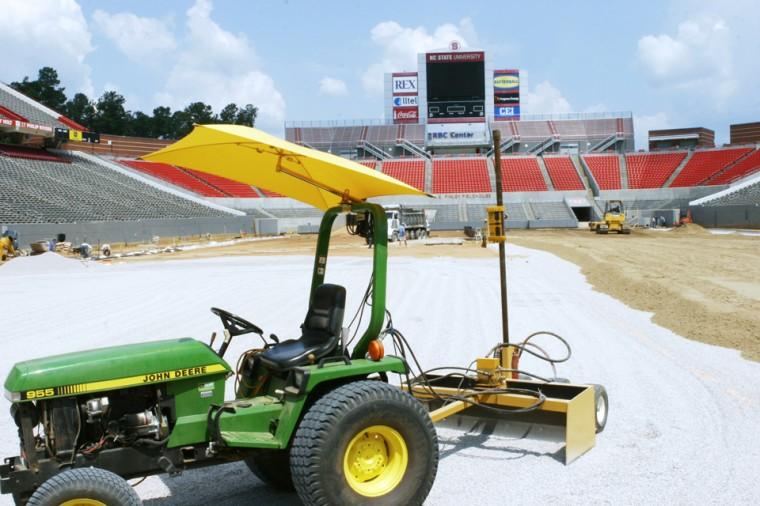When Wolfpack football returns to Carter-Finley stadium in the fall, a familiar feature will be missing. The 2 1/2 foot crown which helped with drainage will be gone, replaced by a completely flat field.
The $1 million project is the first rebuilding of the stadium field in Carter-Finley’s 43-year history.
Crowned fields have been favored by many coaches of the option offense because it allows the ball-carrier to be running downhill towards the sideline. While fans of the option offense may miss the crowned field, the new flatter field should aide N.C. State’s aerial attack.
“Certainly the biggest change will be for our quarterbacks,” coach Tom O’Brien said. “One of the things we wanted to do is make sure the game-field reflected the same gradient that our practice-field has so that everytime we throw a ball on the practice-field, it’s the same as when we step into the stadium to throw a pass.”
The new field will comply with USGA standards for golf greens and feature a synthetic sideline.
And for those worried about how a flat field could cause trouble on a rainy Saturday, N.C. State Assistant Athletics Director for Outdoor Facilities Ray Brincefield says not to be concerned.
“You won’t notice it at all,” Brincefield said. “The field will drain 13 inches an hour, and if we drain [more than] 13 inches an hour, we’re going to be somewhere other than playing football.”
The field will also continue to be covered during thunderstorms before games.
“When we played William & Mary, it rained solidly up until about noon before the game. We covered it with a tarp, and we will still do that,” O’Brien said.
Carter-Finley Stadium is also being fitted with a synthetic sideline consisting of a layer of gravel, a rug, and a sand-and-rubber surface.
“I think it’s a good move because that’s where the most wear-and-tear is, along the sideline,” O’Brien said of the synthetic surface. “That withstands the traffic much better than a normal grass field would.”
The transition between the grass field and synthetic sideline will not be noticable to fans, and will have not effect on players running out of bounds, according to Brincefield.
“I don’t think anybody will notice anything,” he said. “The synthetic will meet the grass all the time exactly the same. They’ll never notice.”
The construction started April 20 and is expected to be completed August 1.
“I think because of our access to the turf management school here which is number one in the country, we’ll probably have the best grass field in the ACC,” O’Brien said.








